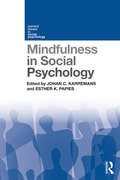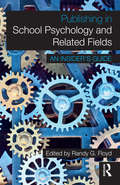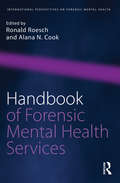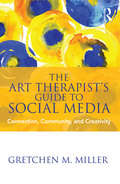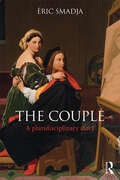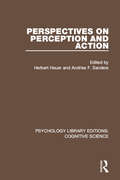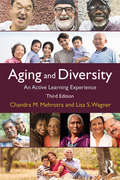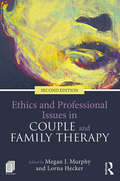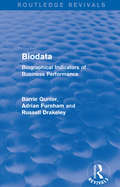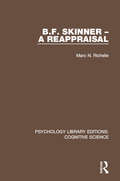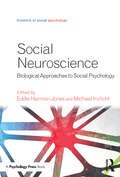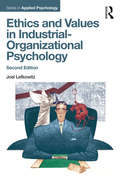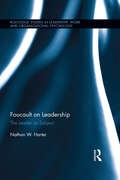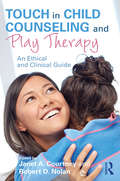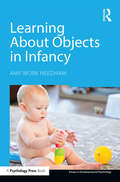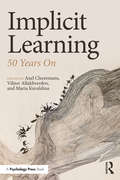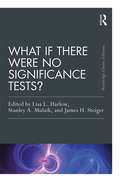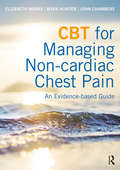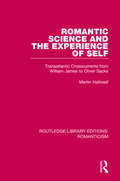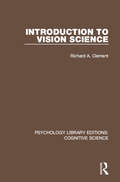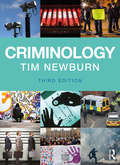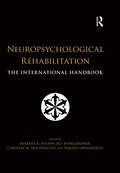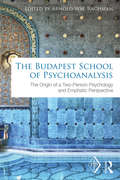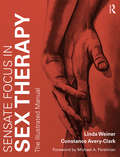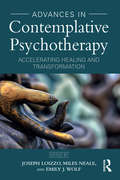- Table View
- List View
Mindfulness in Social Psychology
by Esther K. Papies Johan C. KarremansScientific interest in mindfulness has expanded in recent years, but it has typically been approached from a clinical perspective. This volume brings recent mindfulness research to classic social psychology topics such as romantic relationships, prejudice, prosocial behavior, achievement, and self-control. Written by renowned scholars in social psychology, it combines a comprehensive research overview with an in-depth analysis of the processes through which mindfulness affects people’s daily life experiences. It provides theoretical and methodological guidance for researchers across disciplines and discusses fundamental processes in mindfulness, including its effect on emotion regulation, executive control, automatic and deliberative processing, and its relationship to self-construal and self-identity. This book will be of particular interest to upper-level students and researchers in social psychology, health psychology, and clinical psychology, as well as social work and psychology professionals.
Publishing in School Psychology and Related Fields: An Insider's Guide
by Randy G. FloydPublishing in School Psychology and Related Fields aims to help students, early career professionals, and seasoned scholars alike better understand the process of peer-review and publishing in journals, books, and other professional-oriented forums. Edited by a former editor of the Journal of School Psychology and containing chapters from insiders who have operated as productive authors, reviewers, and editors, this informative new resource contains practical and invaluable advice for anyone looking to increase their scholarly productivity and jump start their career.
Handbook of Forensic Mental Health Services (International Perspectives on Forensic Mental Health)
by Ronald Roesch Alana N. CookHandbook of Forensic Mental Health Services focuses on assessment, treatment, and policy issues regarding juveniles and adults in the criminal and civil systems. Uniquely, this volume is designed for professionals who deliver mental health services, rather than researchers. Just like its parent series, its goal revolves around improving the quality of mental health care services in forensic settings. It achieves this by integrating the findings related to clinical practice, administration, and policy from trends and best practice internationally that mental health professionals can implement.
The Art Therapist's Guide to Social Media: Connection, Community, and Creativity
by Gretchen M. MillerThe Art Therapist’s Guide to Social Media offers the art therapy community a guide that addresses content related to social media use, its growing influence, and the impact social networking has on the profession and work of art therapists. This book presents a framework of relevant theories, best practices, and examples to explore existing and emerging areas of social networking's power for art therapists as practitioners and artists. Divided into three sections that highlight the themes of connection, community, and creativity, chapters explore timely topics such as the professional use of social media, ethical considerations, potential benefits and challenges, and strategies to embrace the possibilities that social media can create for the field worldwide. Art therapists in training, art therapy educators and supervisors, and practicing art therapists will find content in this text helpful for their learning and professional practice.
The Couple: A pluridisciplinary story
by Eric SmadjaThe Couple: A pluridisciplinary story asks two questions and endeavours to answer them: What is the couple? And what story are we talking about? <P><P>Éric Smadja presents his view of "the couple" as a composite, sexual-bodily, socio-cultural and psychic living reality in diverse and variable interrelationships, unfolding within a complex temporality. Ambivalently invested in by each partner, the couple is structurally and dynamically as conflictual as it is critical. <P><P>Smadja sees the couple as situated at the intersection of several histories: socio-cultural; epistemological (the construction of this object of knowledge and of psychoanalytic treatment); "natural" (that of the cycle of conjugal life marked out by critical and mutative stages); and therapeutic (that of the suffering couple that will consult a specialist and undergo psychoanalytic therapy). The Couple: A pluridisciplinary story follows the narrative division of these histories following a pluri- and interdisciplinary investigation combining historical, anthropological, sociological and psychoanalytic approaches. It enables the reader to structure the outline of a general, but irreducibly heterogeneous, picture of the couple, and by so doing, Smadja is able to develop new interdisciplinary concepts, in particular those of couple work and conjugal culture. In the final part of the book, he presents a full case study and introduces new technical aspects of this psychoanalytic work. <P><P>This unique approach to the study of the couple as a unit will appeal to psychoanalysts, especially those working with couples, psychologists, psychotherapists, psychiatrists, medical doctors, students and academics of psychoanalytic studies, anthropology and sociology.
Perspectives on Perception and Action (Psychology Library Editions: Cognitive Science)
by Andries F. Sanders Herbert HeuerOriginally published in 1987, this title aimed to present an eclectic and biased account of the status of perception-action relationships in various fields at the time. The chapters can be divided into three sections. The first focuses on motor control, a neglected topic in the past and hence deserving the role of the starting point of this volume. In addition motor control provides a good background to discuss the clear sensory and perceptual effects. However, motor processes are also highly relevant to perception, which was usually less emphasized in the literature at the time. Therefore a special section is devoted to motor processes in perception together with the issue of integrating information from different sources. The book concludes with a section on attention and selection of perceptual information for subsequent action.
Aging and Diversity: An Active Learning Experience
by Chandra Mehrotra, Ph.D. Lisa Smith WagnerAs the older population in the United States is becoming more racially and ethnically diverse, it is important to understand the characteristics, the potential, and the needs of this population. In this new and fully revised edition of Aging and Diversity, Chandra Mehrotra and Lisa Wagner address key topics in diversity and aging, discussing how the aging experience is affected by not only race and ethnicity but also gender, religious affiliation, social class, rural-urban community location, and sexual orientation and gender identity. Taking this broad view of human diversity allows the authors to convey some of the rich complexities facing our aging population – complexities that provide both challenges to meet the needs of a diverse population of elders and opportunities to learn how to live in a pluralistic society. Mehrotra and Wagner present up-to-date knowledge and scholarship about aging and diversity in a way that engages readers in active learning, placing ongoing emphasis on developing readers’ knowledge and skills, fostering higher order thinking, and encouraging exploration of personal values and attitudes.
Ethics and Professional Issues in Couple and Family Therapy
by Megan J. Murphy Lorna HeckerEthics and Professional Issues in Couple and Family Therapy, Second Edition builds upon the strong foundations of the first edition. This new edition addresses the 2015 AAMFT Code of Ethics as well as other professional organizations’ codes of ethics, and includes three new chapters: one on in-home family therapy, a common method of providing therapy to clients, particularly those involved with child protective services; one chapter on HIPAA and HITECH Regulations that practicing therapists need to know; and one chapter on professional issues, in which topics such as advertising, professional identity, supervision, and research ethics are addressed. This book is intended as a training text for students studying to be marriage and family therapists.
Biodata (Routledge Revivals): Biographical Indicators of Business Performance
by Adrian Furnham Barrie Gunter Russell DrakeleyFirst published in 1993. This book is intended for managers and occupational psychologists involved in the selection and assessment of the workforce. It details the history and development of the use of biographical data for both recruitment and promotion of employees. Grounded in relevant research literature, it offers a comprehensive analysis of the advantages and disadvantages of biodata in different contexts. It also includes examples of applications and recommendations for use, as well as examples of questionnaires. Written by experts, it represents a wide-ranging review of the contemporary research in the field. This work will be of interest to students of business and psychology.
B.F. Skinner - A Reappraisal: A Reappraisal (Psychology Library Editions: Cognitive Science)
by Marc N. RichelleB.F. Skinner died in August 1990. He was praised as one of the most influential psychologists of this century, but was also attacked by a variety of opponents within and outside the field of psychology. Originally published in 1993, this introduction to his work is first of all a guide to a correct reading of his writings, a reading void of the distortions and misinterpretations often conveyed by many commentators, including psychologists. It frames Skinner’s contributions with reference to major European traditions in psychological sciences, namely Pavlov, Freud, Lorenz and Piaget. Crucial aspects of Skinner’s theory and methodological stands are discussed in the context of contemporary debates: special attention is devoted to the relation of psychology with biology and the neurosciences, to the cognitivist movement, to the status of language and to the explanation of novelty and creativity in human behaviour. Finally, Skinner’s social and political philosophy is presented with an emphasis on the provocative aspects of an analysis of current social practices which fail to solve most of the urgent problems humankind is confronted with today. Both in science proper and in human affairs at large, Skinner’s thought is shown to be, not behind, as is often claimed, but on the contrary ahead of the times, be it in his interactive view of linguistic communication, in his very modern use of the evolutionary analogy to explain the dynamics of behaviour, or in his vision of ecological constraints. Written by a European psychologist, the book departs from traditional presentations of Skinner’s work in the frame of American psychology. It will provide the reader, who is unfamiliar with the great behaviourist’s writings, a concise yet in-depth introduction to his work.
Social Neuroscience: Biological Approaches to Social Psychology (Frontiers of Social Psychology)
by Eddie Harmon-Jones and Michael InzlichtSocial Neuroscience provides an updated and critically important survey of contemporary social neuroscience research. In response to recent advances in the field, this book speaks to the various ways that basic biological functions shape and underlie social behavior. The book also shows how an understanding of neuroscience, physiology, genetics, and endocrinology can foster a fuller, more consilient understanding of social behavior and of the person. These collected chapters cover traditional and contemporary social psychology topics that have received conceptual and empirical attention from social neuroscience approaches. While the focus of the chapters is demonstrating how social neuroscience methods contribute to understanding social psychological topics, they also cover a wide range of social neuroscience methods, including hormones, functional magnetic resonance imaging, electroencephalography, event-related brain potentials, cardiovascular responses, and genetics.
Ethics and Values in Industrial-Organizational Psychology, Second Edition (Applied Psychology Series)
by Joel LefkowitzEthics and Values in Industrial-Organizational Psychology was one of the first books to integrate work from moral philosophy, moral psychology, I-O psychology, and political and social economy, as well as business. It incorporates these perspectives into a "framework for taking moral action" and presents a practical model for ethical decision making. The second edition has added a chapter on Virtue Theory, including its application in I-O, Organizational behavior (OB) and business; expands Moral Psychology to two chapters, with more attention to moral emotions, effects of the "dark side" of personality, and the intuitionist model of moral judgment; expands the sections on social and economic justice; and expands the treatment of the Responsible Conduct of Research with a new chapter on Research Integrity. Examples from I-O research and practice, as well as current business events, are offered throughout. It is ideal for ethics and I-O courses at the graduate level.
Foucault on Leadership: The Leader as Subject (Routledge Studies in Leadership, Work and Organizational Psychology)
by Nathan W. HarterMichel Foucault, one of the most cited scholars in the social sciences, devoted his last three lectures to a study of leader development. Going back to pagan sources, Foucault found a persistent theme in Hellenistic antiquity that, in order to qualify for leadership, a person must undergo processes of subjectivation, which is simply the way that a person becomes a Subject. From this perspective, an aspiring leader first becomes a Subject who happens to lead. These processes depend on a condition of parresia, which is truth-telling at great risk that is for the edification of the other person. A leader requires a mentor and advisors in order to lead successfully, while also developing the capacity in one’s own mind to heed the truth. In other words, a leader must learn how to guide oneself. A valuable contribution to the field of leadership studies, this book summarizes these last lectures as they pertain to the study and practice of leadership, emphasizing the role of ethics and truth-telling as a check on power. It then presents several other contexts where these same lessons can be seen in practice, including in the life of Alexander Solzhenitsyn, whose career as a writer epitomized speaking truth to power, and somewhat surprisingly in the United States military, in response to its twenty-first century mission of counterinsurgency.
Touch in Child Counseling and Play Therapy: An Ethical and Clinical Guide
by Janet A. Courtney Robert D. NolanTouch in Child Counseling and Play Therapy explores the professional and legal boundaries around physical contact in therapy and offers best-practice guidelines from a variety of perspectives. Chapters address issues around appropriate and sensitive therapist-initiated touch, therapeutic approaches that use touch as an intervention in child treatment, and both positive and challenging forms of touch that are initiated by children. In these pages, professionals and students alike will find valuable information on ways to address potential ethical dilemmas, including defining boundaries, working with parents and guardians, documentation, consent forms, cultural considerations, countertransference, and much more.
Learning About Objects in Infancy (Essays in Developmental Psychology)
by Amy Work NeedhamHow do young infants experience the world around them? How similar or different are infants’ experiences from adults’ experiences of similar situations? How do infants progress from relatively sparse knowledge and expectations early in life to much more elaborate knowledge and expectations just several months later? We know that much of infants’ learning before four to five months of age is visually-based. As they develop the ability to reach for objects independently, they can explore objects that are of particular interest to them—a new skill that must be important for their learning. Through this transition to independent reaching and exploration, infants go a long way toward forming their own understandings of the objects around them. Towards the end of the first year of life, infants begin manipulating one object relative to another and this skill sets the stage for them to begin using objects instrumentally—using one object to create changes in other objects. This new ability opens up many opportunities for infants to learn about using tools. In this volume, Amy Work Needham provides an extensive overview of her research on infant learning, with a particular focus on how infants learn about objects. She begins with an explanation of how basic aspects of how infants’ visual exploration of objects allows them to create new knowledge about objects and object categories. She continues with a description of infants’ visual and manual learning about hand-held tools and how these tools can be used to achieve goals. Throughout, she focuses on active learning and development, which results in infants making important contributions to their own learning about objects. She concludes by synthesizing the findings discussed, pulls out recurring themes across studies, and brings together fundamental principles of how infants learn about objects.
Implicit Learning: 50 Years On
by Axel Cleeremans Viktor Allakhverdov Maria KuvaldinaCan we learn without knowing we are learning? To what extent is our behavior influenced by things we fail to perceive? What is the relationship between conscious and unconscious cognition? Implicit Learning: 50 Years On tackles these key questions, fifty years after the publication of Arthur Reber’s seminal text. Providing an overview of recent developments in the field, the volume considers questions about the computational foundations of learning, alongside phenomena including conditioning, memory formation and consolidation, associative learning, cognitive development, and language learning. Featuring contributions from international researchers, the book uniquely integrates ‘Western’ thinking on implicit learning with insights from a rich Russian research tradition. This approach offers an excellent opportunity to contrast perspectives, to introduce new experimental paradigms, and to contribute to ongoing debates about the very nature of implicit learning. Implicit Learning: 50 Years On is essential reading for students and researchers of consciousness, specifically those interested in implicit learning.
What If There Were No Significance Tests?: Classic Edition (Multivariate Applications Series)
by Lisa L. Harlow Stanley A. Mulaik James H. SteigerThe classic edition of What If There Were No Significance Tests? highlights current statistical inference practices. Four areas are featured as essential for making inferences: sound judgment, meaningful research questions, relevant design, and assessing fit in multiple ways. Other options (data visualization, replication or meta-analysis), other features (mediation, moderation, multiple levels or classes), and other approaches (Bayesian analysis, simulation, data mining, qualitative inquiry) are also suggested. The Classic Edition’s new Introduction demonstrates the ongoing relevance of the topic and the charge to move away from an exclusive focus on NHST, along with new methods to help make significance testing more accessible to a wider body of researchers to improve our ability to make more accurate statistical inferences. Part 1 presents an overview of significance testing issues. The next part discusses the debate in which significance testing should be rejected or retained. The third part outlines various methods that may supplement significance testing procedures. Part 4 discusses Bayesian approaches and methods and the use of confidence intervals versus significance tests. The book concludes with philosophy of science perspectives. Rather than providing definitive prescriptions, the chapters are largely suggestive of general issues, concerns, and application guidelines. The editors allow readers to choose the best way to conduct hypothesis testing in their respective fields. For anyone doing research in the social sciences, this book is bound to become "must" reading. Ideal for use as a supplement for graduate courses in statistics or quantitative analysis taught in psychology, education, business, nursing, medicine, and the social sciences, the book also benefits independent researchers in the behavioral and social sciences and those who teach statistics.
CBT for Managing Non-cardiac Chest Pain: An Evidence-based Guide
by Elizabeth Marks Myra Hunter John ChambersCBT for Managing Non-cardiac Chest Pain is an evidence-based guide and workbook for clinicians working with people with non-cardiac chest pain (NCCP). NCCP affects around 25–30% of people in the UK, USA, and Europe and is associated with high levels of health care use and compromised quality of life. This is the first book to describe a treatment programme to fill the gap in care for patients. The authors have developed and researched a novel approach that demonstrates how physiological, cognitive, behavioural and social factors all contribute to the negative experience of chest pain. With the help of exercises and downloadable handouts for the patient, the book aims to provide the necessary information and clinical skills and approaches for clinicians to use in health care settings. CBT for Managing Non-cardiac Chest Pain will appeal to anyone involved in the care of patients with NCCP, including nurses; general practitioners; cardiologists; acute medical physicians and psychologists.
Romantic Science and the Experience of Self: Transatlantic Crosscurrents from William James to Oliver Sacks (Routledge Library Editions: Romanticism #Vol. 2)
by Martin HalliwellFirst published in 1999, this engaging interdisciplinary study of romantic science focuses on the work of five influential figures in twentieth-century transatlantic intellectual history. In this book, Martin Halliwell constructs an innovative tradition of romantic science by indicating points of theoretical and historical intersection in the thought of William James (American philosopher); Otto Rank (Austrian psychoanalyst); Ludwig Binswanger (Swiss psychiatrist); Erik Erikson (Danish/German psychologist); and Oliver Sacks (British neurologist). Beginning with the ferment of intellectual activity in late eighteenth-century German Romanticism, Halliwell argues that only with William James’ theory of pragmatism early in the twentieth century did romantic science become a viable counter-tradition to strictly empirical science. Stimulated by debates over rival models of consciousness and renewed interest in theories of the self, Halliwell reveals that in their challenge to Freud’s adoption of ideas from nineteenth-century natural science, these thinkers have enlarged the possibilities of romantic science for bridging the perceived gulf between the arts and sciences.
Introduction to Vision Science (Psychology Library Editions: Cognitive Science)
by Richard A. ClementDifferent animals have different visual systems and so presumably have different ways of seeing. How does the way in which we see depend on the optical, neural and motor components of our visual systems? Originally published in 1993, the mathematical tools needed to answer this question are introduced in this book. Elementary linear algebra is used to describe the transformations of the stimulus that occur in the formation of the optical, neural and motor images in the human visual system. The distinctive feature of the approach is that transformations are specified with enough rigour for readers to be able to set up their own models and generate predictions from them. Underlying the approach of this book is the goal of providing a self-contained source for the derivation of the basic equations of vision science. An introductory section on vector and matrix algebra covers the mathematical techniques which are applied to both sensory and motor aspects of the visual system, and the intervening steps in the mathematical arguments are given in full, in order to make the derivation of the equations easier to follow. A subsidiary goal of this book is to demonstrate the utility of current desktop computer packages which make the application of mathematics very easy. All the numerical results were produced using only a spreadsheet or mathematics package, and example calculations are included in the text.
Criminology
by Tim NewburnComprehensive and accessible, Tim Newburn’s bestselling?Criminology?provides an introduction to the fundamental themes, concepts, theories, methods and events that underpin the subject and form the basis for all undergraduate degree courses and modules?in Criminology and Criminal Justice. This third edition includes: A new chapter on politics, reflecting the ever increasing coverage of political influence and decision making on criminology courses New and updated crime data and analysis of trends, plus new content on recent events such as the Volkswagen scandal, the latest developments on historic child abuse, as well as extended coverage throughout of the English riots A fully revised and updated companion website, including exam, review and multiple choice questions, a live Twitter feed from the author providing links to media and academic coverage of events related to the concepts covered in the book, together with links to a dedicated textbook Facebook page Fully updated to reflect recent developments in the field and extensively illustrated, this authoritative text, written by a leading criminologist and experienced lecturer, is essential reading for all students of Criminology and related fields.
Neuropsychological Rehabilitation: The International Handbook (Studies On Neuropsychology, Neurology And Cognition Ser.)
by Barbara A. Wilson Jill Winegardner Caroline M. van Heugten Tamara OwnsworthThis outstanding new handbook offers unique coverage of all aspects of neuropsychological rehabilitation. Compiled by the world’s leading clinician-researchers, and written by an exceptional team of international contributors, the book is vast in scope, including chapters on the many and varied components of neuropsychological rehabilitation across the life span within one volume. Divided into sections, the first part looks at general issues in neuropsychological rehabilitation including theories and models, assessment and goal setting. The book goes on to examine the different populations referred for neuropsychological rehabilitation and then focuses on the rehabilitation of first cognitive and then psychosocial disorders. New and emerging approaches such as brain training and social robotics are also considered, alongside an extensive section on rehabilitation around the world, particularly in under-resourced settings. The final section offers some general conclusions and an evaluation of the key issues in this important field. This is a landmark publication for neuropsychological rehabilitation. It is the standalone reference text for the field as well as essential reading for all researchers, students and practitioners in clinical neuropsychology, clinical psychology, occupational therapy, and speech and language therapy. It will also be of great value to those in related professions such as neurologists, rehabilitation physicians, rehabilitation psychologists and medics.
The Budapest School of Psychoanalysis: The Origin of a Two-Person Psychology and Emphatic Perspective (Psychoanalytic Inquiry Book Series)
by Arnold RachmanThe Budapest School of Psychoanalysis brings together a collection of expertly written pieces on the influence of the Budapest (Ferenczi) conception of analytic theory and practice on the evolution of psychoanalysis. It touches on major figures Sándor Ferenczi and Michael Balint whilst concurrently considering topics such as Ferenczi’s clinical diary, the study of trauma, the Confusion of Tongues paradigm, and Balint’s perspective on supervision. Further to this, the book highlights Jacques Lacan’s teaching of Ferenczi, which brings a fresh perspective to a relatively unknown connection between them. The book highlights that the Hungarian analysts, influenced by Ferenczi, through their pioneering work developed a psychoanalytic paradigm which became an alternative to the Freudian tradition. That this paradigm has become recognised and admired in its own right underlines the need to clearly outline, as this book does, the historical context and the output of those who are writing and working in the tradition of the Budapest School. The contributions to this volume demonstrate the widespread and enduring influence of the Budapest School on contemporary psychoanalysis. The contributors are amongst the foremost in Budapest School scholarship and the insights they offer are at once profound as well as insightful. This book is an important read for those practitioners and students of psychoanalysis who wish for an insight into the early and developing years of the Budapest School of Psychoanalysis and its impact on contemporary clinical practice.
Sensate Focus in Sex Therapy: The Illustrated Manual
by Linda Weiner Constance Avery-ClarkSensate Focus in Sex Therapy: The Illustrated Manual is an illustrated manual that provides health professionals with specific information on the use of the structured touching opportunities used regularly by Sexologists to address their clients’ sexual difficulties (Sensate Focus 1) and enhance intimate relationships (Sensate Focus 2). This book is the only one to: vividly describe and illustrate the specific steps of, activities involved in, and positions associated with Sensate Focus; emphasize the purpose of Sensate Focus as a mindfulness-based practice; and distinguish between the purposes of Sensate Focus 1 and Sensate Focus 2. Through the use of artful drawings and descriptive text, this manual engages mental health and medical professionals and their clients by appealing to both the visual and the analytical. It discusses how modifications to Sensate Focus can be applied to diverse populations, such as LGBTQ clients, the elderly, the disabled, trauma survivors, and those with challenges such as Autism Spectrum, anxiety, and depression. The book also offers suggestions for dealing with common client difficulties such as avoidance, confusion, and goal directed attitudes. This comprehensive approach to Sensate Focus will remind readers of the beauty and power of touch while offering suggestions for moving from avoidance to sensory transcendence.
Advances in Contemplative Psychotherapy: Accelerating Healing and Transformation
by Joe Loizzo Miles Neale Emily J. WolfAdvances in Contemplative Psychotherapy offers mental health professionals of all disciplines and orientations the most comprehensive and rigorous introduction to the state of the art and science in integrating mindfulness, compassion, and embodiment techniques. It brings together clinicians and thinkers of unprecedented caliber, featuring some of the most eminent pioneers in a rapidly growing field. The array of contributors represents the full spectrum of disciplines whose converging advances are driving today’s promising confluence of psychotherapy with contemplative science. This historic volume expands the dialogue and integration among neuroscience, contemplative psychology, and psychotherapy to include the first full treatment of second- and third-generation contemplative therapies, based on advanced meditation techniques of compassion training and role-modeled embodiment. Advances in Contemplative Psychotherapy offers the most profound and synoptic overview to date of one of the most intriguing and promising fields in psychotherapy today.
